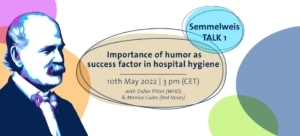In the recently published study “Alternatives to antibiotics – a pipeline portfolio review” (The Lancet, 12 January 2016) the scientists demonstrate the ten most promising so called “non-compound approaches”. What must be done to develop these “A2A-s”? We asked co-author Dr. Lloyd Czaplewski, Director at Chemical Biology Ventures Limited, UK.
Dr. Czaplewski, the study gives a very good and understandable overview of diverse approaches: standalone treatment (Probiotics, Lysins, and Bacteriophages), combination with standard antibiotic (Immune Stimulation, Antimicrobial Peptides, Host/Innate Defense Peptides and Antibiofilm Peptides) and infection prevention (Antibodies and Vaccines). What can be considered as the most advanced A2A area?
The most likely to gain clinical use quickly will be probiotics to treat and prevent C. difficile infection. Monoclonal antibodies will probably also be successful to prevent infection in selected patients but are likely to be costly. There are fewer therapeutic options. Lysins for S. aureus would seem the best bet.
How well are the approaches being investigated?
Many of the alternative approaches are represented by single projects in academia or biotech and it was not possible to predict how much impact they will have on clinical practice. However, the group did recognise several innovative approaches with sufficient activity and potential to merit a prioritised review.
One of the key messages of the study is: Understanding of the potential of alternatives to antibiotics will need experimental clinical medicine and not just drug discovery.” What can be done to promote the part of the experimental clinical medicine?
There are very few experimental clinical microbiologists around to test new therapies. The most innovative approaches may require a lot of clinical experimentation to work out how to use them. The development of innovative treatments for cancer for example is based on a huge platform of funding to understand cancer. We need the same for antibiotics – more fundamental and more translational research.
Concerning Clostridium difficile, Pseudomonas aeruginosa and Staphylococcus aureus: Why is it probably difficult to find new drugs especially against these pathogens?
I don’t think it is necessarily any harder to find new drugs against C. difficile, P. aeruginosa and S. aureus than for others eg. Burkholderia, Klebsiella or Enterococcus. Most people focus on C. difficile, P. aeruginosa and S. aureus because there is clinical need and they can get funding. We need to work on the others as well.
Antimicrobial research and development to address the problem of antibiotic resistance probably needs an effort that is somewhere between the Large Hadron Collider (£6 billion) and the International Space Station (£96 billion). This is a good picture to get an impression about the costs. How can we raise the huge sums of money?
One objective of the paper was to identify what is feasible now and how much money it would need to find out if the approaches work. At least this is now defined. DRIVE-AB have done a similar analysis with the same results and in the US BARDA has just started. When everyone agrees perhaps we can get some coordinated effort.




